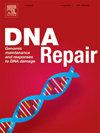The comet assay: A contemporary approach for detecting genomic instability
IF 2.7
3区 生物学
Q2 GENETICS & HEREDITY
引用次数: 0
Abstract
The comet assay has evolved into a high-resolution, multifunctional technique for evaluating DNA damage, repair capacity, and epigenetic modifications. Over the past fifteen years, significant advancements-including the enzyme-modified comet assays (EMCA), Comet-FISH, and high-throughput platforms have substantially expanded its analytical capabilities. Specialized formats like the Flash comet assay and the BrdU comet assay further enhance the discrimination of DNA strand break types and replication-associated damage. Despite these innovations, issues related to standardization, reproducibility, and inter-laboratory consistency remain. Initiatives such as the Minimum Information for Reporting Comet Assay (MIRCA) guidelines, alongside the integration of automated imaging and machine learning, are being implemented to address these challenges. With its growing applications in environmental toxicology, biomonitoring, and clinical research, the comet assay is increasingly recognized as a key tool in precision toxicology and personalized medicine. This review highlights major technical developments and emerging applications of the comet assay over the past fifteen years, discusses sources of experimental variability and strategies for optimization, and provides an update on current laboratory protocols for assessing DNA damage induced by genotoxic agents.
彗星试验:一种检测基因组不稳定性的当代方法。
彗星分析已经发展成为一种高分辨率、多功能的技术,用于评估DNA损伤、修复能力和表观遗传修饰。在过去的15年里,包括酶修饰彗星测定法(EMCA)、comet - fish和高通量平台在内的重大进步大大扩展了其分析能力。Flash彗星分析和BrdU彗星分析等专门格式进一步增强了DNA链断裂类型和复制相关损伤的区分。尽管有这些创新,与标准化、可重复性和实验室间一致性相关的问题仍然存在。为了应对这些挑战,正在实施诸如报告彗星分析(MIRCA)指南的最低信息(Minimum Information for Reporting Comet Assay)以及自动化成像和机器学习的集成等举措。随着彗星分析在环境毒理学、生物监测和临床研究中的应用越来越广泛,彗星分析越来越被认为是精确毒理学和个性化医疗的关键工具。本综述重点介绍了过去15年来彗星分析的主要技术发展和新兴应用,讨论了实验变异性的来源和优化策略,并提供了评估遗传毒性物质诱导的DNA损伤的当前实验室方案的更新。
本文章由计算机程序翻译,如有差异,请以英文原文为准。
求助全文
约1分钟内获得全文
求助全文
来源期刊

DNA Repair
生物-毒理学
CiteScore
7.60
自引率
5.30%
发文量
91
审稿时长
59 days
期刊介绍:
DNA Repair provides a forum for the comprehensive coverage of DNA repair and cellular responses to DNA damage. The journal publishes original observations on genetic, cellular, biochemical, structural and molecular aspects of DNA repair, mutagenesis, cell cycle regulation, apoptosis and other biological responses in cells exposed to genomic insult, as well as their relationship to human disease.
DNA Repair publishes full-length research articles, brief reports on research, and reviews. The journal welcomes articles describing databases, methods and new technologies supporting research on DNA repair and responses to DNA damage. Letters to the Editor, hot topics and classics in DNA repair, historical reflections, book reviews and meeting reports also will be considered for publication.
 求助内容:
求助内容: 应助结果提醒方式:
应助结果提醒方式:


